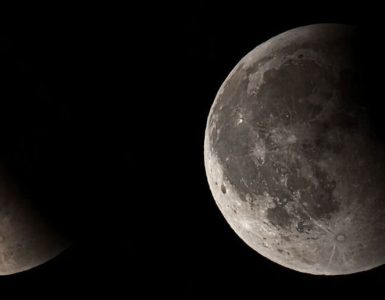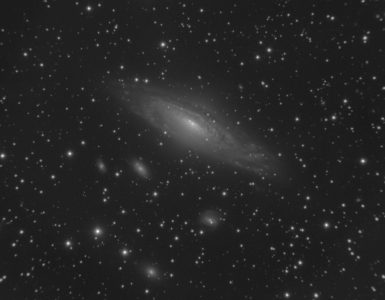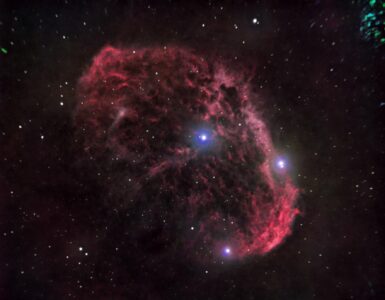 The announced electricity price increases seem to be having a positive effect on our evening skies at the moment. Many outdoor lights simply stay off. The darkness of the evening sky, which was already thought to be lost, is increasingly returning in our rural area. Thus it is already a great experience to direct the view towards the zenith and to follow the luminous band of the Milky Way. With the eyes or a binocular one can already recognize numerous objects, above all however a lot of stars. I photographed some impressions with my Sony Alpha 6000 with f/2 and 30 seconds exposure time during the last days. To explain: We see our Milky Way from inside, hence the band of stars in the sky. To the left of the captured trace of a bolide we see our neighboring galaxy Messier 31 as diffuse spot (Andromeda Nebula). So we are looking obliquely out of the disk of our home galaxy.
The announced electricity price increases seem to be having a positive effect on our evening skies at the moment. Many outdoor lights simply stay off. The darkness of the evening sky, which was already thought to be lost, is increasingly returning in our rural area. Thus it is already a great experience to direct the view towards the zenith and to follow the luminous band of the Milky Way. With the eyes or a binocular one can already recognize numerous objects, above all however a lot of stars. I photographed some impressions with my Sony Alpha 6000 with f/2 and 30 seconds exposure time during the last days. To explain: We see our Milky Way from inside, hence the band of stars in the sky. To the left of the captured trace of a bolide we see our neighboring galaxy Messier 31 as diffuse spot (Andromeda Nebula). So we are looking obliquely out of the disk of our home galaxy.
To finish the evening with another experience I visited the Eagle Nebula Messier 16 afterwards. Who does not remember it? In 1995, the Hubble Space Telescope showed us an image called “The Pillars of Creation.” The Eagle Nebula hosts the young, hot star cluster NGC 6611. This cluster of stars illuminates the surrounding masses of gas and dust, creating a bubble-like cavity and the pillars. The dust columns are up to 9.5 light-years long. At the tops are young stars. If we look more closely, we can also see a bird of prey in a swoop, which is how the nebula got its name. The nebula is located about 7000 light-years from Earth in the constellation of Serpent and has an apparent magnitude of 6.4. The southern location of the object does not make photography in our latitudes easy. There is only a short time window to capture the needed light information.
M16 was exposed with 16 frames of 3 min each. A 10 inch Lacerta Newton telescope F/4.7, a Zwo-Asi color camera 2600 MC Pro and an Optolong L-Extreme Dual narrow band filter were used.
Text and photos: Ralf Schmidt






Add comment